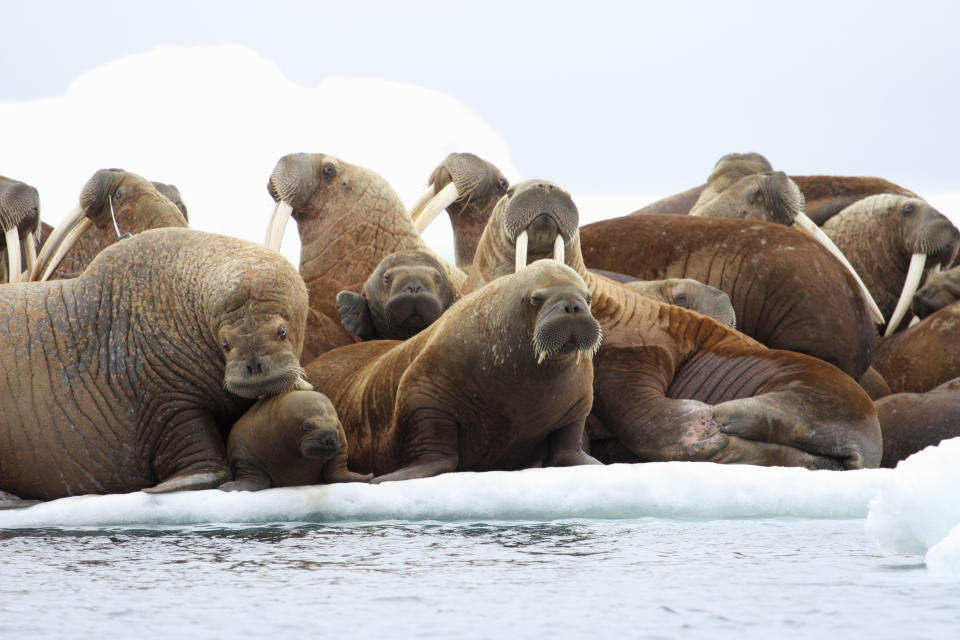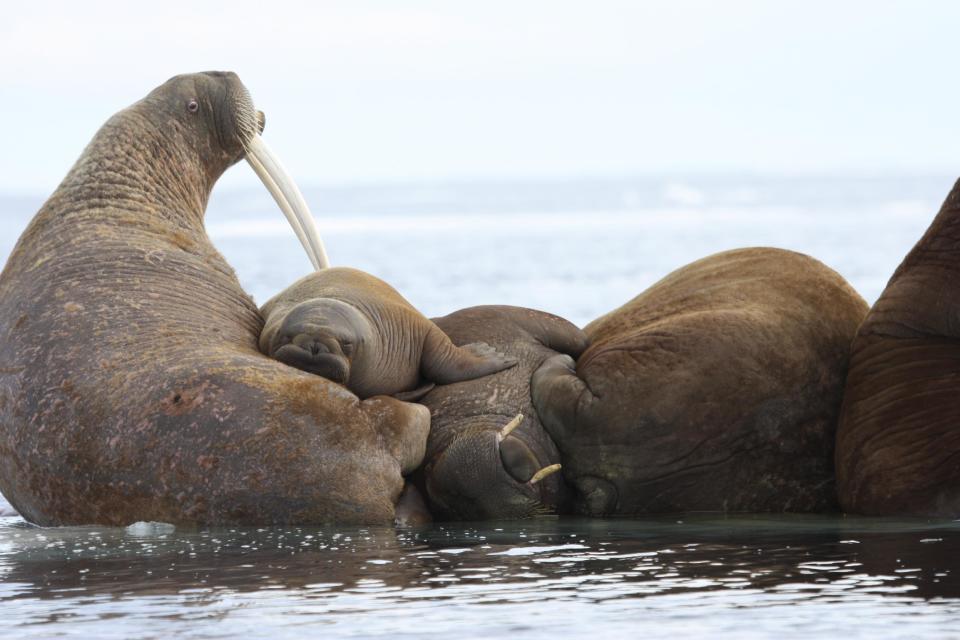Feds: Lack of sea ice changes walrus behavior
ANCHORAGE, Alaska (AP) — The absence of vast swaths of summer sea ice is changing the behavior of Pacific walrus, federal scientists said Wednesday, but added that more research will be needed to say what the final effects might be.
"There is a definite concern for the population," said Chad Jay, a U.S. Geological Survey research ecologist who studies patterns of walrus distribution.
Since 2008, Jay, USGS researcher Anthony Fischbach and colleagues in Russia have used crossbows to attach temporary radio collars to walrus so their movements can be tracked.
In a paper published last month, they concluded that walrus in late summer will increase their use of coastal resting areas, called haul-outs, and feed in nearshore foraging areas because sea ice will continue to diminish. The consequences for the population, they said, was not known.
A decade ago, the future of walrus was hardly a consideration. Their habitat in in a hostile locale off a remote state provided natural protections.
Warming has opened up the Arctic for ecotourism, petroleum development and possibly cargo transport and commercial fishing. Like polar bears, walrus have seen their primary habitat melting beneath their feet or flippers.
Walruses cannot swim indefinitely. They use ice, rocks or beaches as resting platforms.
Walrus females give birth in the Bering Sea, and as temperatures warm each summer, live on the sea ice edge as it moves north through the Bering Strait and into the Chukchi Sea. The ice provides a sanctuary for nursing walrus calves and an ever-changing diving platform for females that hunt along the ocean floor for clams, snails and marine worms. Biologists compare the ice edge to a conveyor belt that carries walrus north and south as ice melts and re-forms with the seasons.
A wakeup call for U.S. scientists came in 2007, when several thousand walrus appeared on Alaska's northwest coast in late summer. Ice had receded beyond the shallow continental shelf to the Arctic Basin, where the ocean floor is 10,000 feet down and too deep to reach by walrus. Thousands more hauled out on the Russian side.
Remnant ice kept walrus offshore in 2008, but they returned to shore in late summer 2009, with tragic consequences: more than 130 mostly young walruses were crushed at Icy Cape in a stampede that could have been caused by a polar bear, human hunters or an airplane.
In 2010, upward of 20,000 walrus were counted near Point Lay, an Eskimo village 300 miles southwest of Barrow. In 2011, 5.000 walruses were spotted north of Point Lay and 3,000 more a short distance away.
The U.S. Fish and Wildlife Service last year added walrus to the "warranted but precluded" list, deciding that the animals need additional protections but could not be listed because other species were a higher priority. A legal settlement requires a decision by 2017.
Researchers, meanwhile, will continue investigating whether walrus gathered on the coast will deplete nearshore food resources, which are typically less bountiful for walrus than offshore areas, or if a toll will be taken on the health of females and calves that have to forage farther for food.
Despite record low ice this year, remnant ice floating off Alaska's northwest allowed walrus to stay offshore. As the climate continues to warm, Jay said, walrus are likely to be back on shore in late summer.
"We expect to see this behavior continue and that period of time when walrus are using coastal haul-outs and are forced to forage in these less-productive waters — we expect that period to continue into the future as we experience more climate warming," he said.



